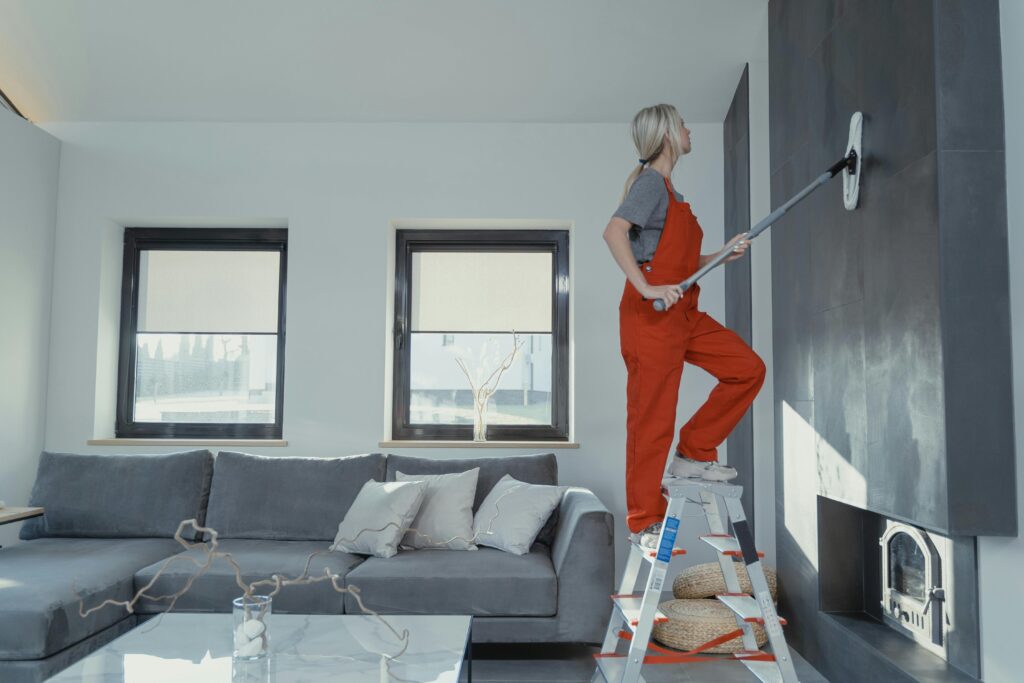Water stains on your ceilings and walls can be an eyesore, making your home look older and more neglected than it is. These stains usually appear after a roof leak, plumbing issue, or high humidity, leaving behind unsightly brown or yellowish marks. The good news? You don’t need to call a professional to fix it! With simple steps and basic supplies, you can remove water stains and make your ceilings and walls look fresh again. Let’s dive into this easy DIY guide!
Step 1: Identify and Fix the Source of the Water Leak
Before tackling the stain itself, it’s crucial to ensure that the problem causing the stain has been fixed. If the stain was caused by a leak, check your roof, plumbing, or any nearby water sources to make sure there are no active issues. If you skip this step, the stain will just come back.
Step 2: Gather Your Supplies
You don’t need fancy equipment—just a few household items will do:
- White vinegar or bleach (for cleaning and disinfecting)
- Water
- A sponge or clean cloth
- A spray bottle
- Primer (stain-blocking type)
- Paint (to match your ceiling or wall color)
- A paintbrush or roller
Step 3: Clean the Stained Area
Mix equal parts white vinegar and water in a spray bottle. If the stain is stubborn, you can use a mix of one-part bleach to three parts water instead. Lightly spray the stain and let it sit for about 10 minutes. Then, wipe it away with a clean sponge or cloth. This should remove any surface mold or mildew while lightening the stain.
Step 4: Let It Dry Completely
Once you’ve cleaned the stain, allow the area to dry fully. This is important because painting over a damp surface can lead to peeling or further staining. If necessary, use a fan or dehumidifier to speed up the drying process.
Step 5: Apply a Stain-Blocking Primer
Even if the stain looks lighter after cleaning, water stains tend to bleed through paint. To prevent this, apply a stain-blocking primer over the affected area. Use a brush or roller to ensure even coverage, and let it dry according to the manufacturer’s instructions.
Step 6: Repaint the Area
Once the primer is dry, repaint the spot with a color that matches your wall or ceiling. You may need two coats for full coverage. Allow the paint to dry completely between coats.
Bonus Tip: Prevent Future Water Stains
To avoid dealing with water stains in the future, monitor your home’s plumbing, roof, and humidity levels. Regular maintenance and quick action on leaks will help prevent stains from reappearing.
Water stains on ceilings and walls might seem daunting, but with a little effort, you can easily remove them and restore your home’s appearance. By following these simple steps—cleaning, drying, priming, and repainting—you’ll have your walls looking as good as new in no time. So grab your supplies and say goodbye to those unsightly stains today!

